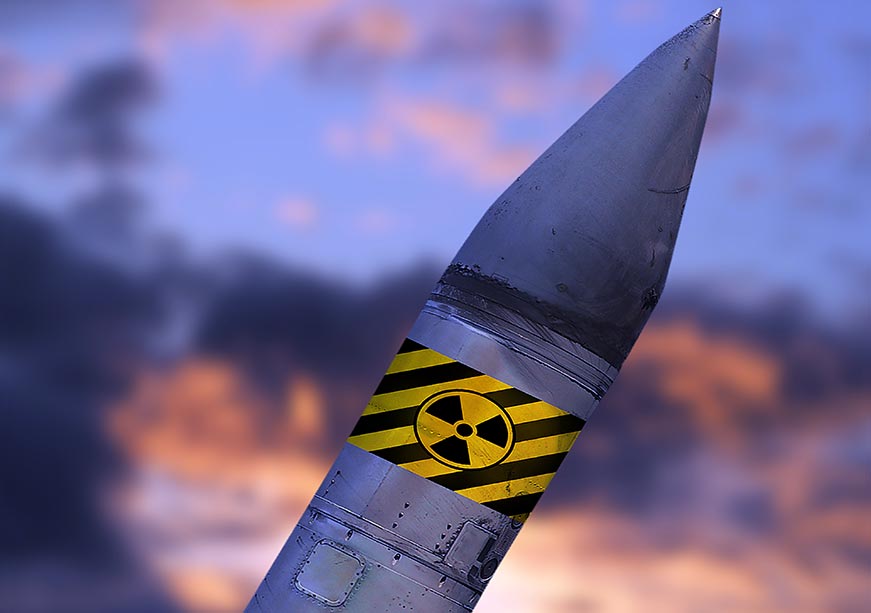-
CENTRES
Progammes & Centres
Location
For India, the key implications come in the form of the direction China is headed on nuclear.

Image Source: Getty
Nuclear (dis)order is shaped heavily by the nature of interaction among States. Major challenges are emerging at the structural level in the international system, leading to fissures in the extant regime. On the one hand, there is an axis of upheaval led by China, Russia, North Korea, and Iran defying the nuclear order and, on the other, the United States (US) led by Donald Trump aiming to resume nuclear testing. In the context of the Russia-Ukraine war, Moscow has reframed its nuclear doctrine to push back against the Western support for Ukraine. The existing nuclear order amid the ongoing breakdown of norms is pushing the world towards a brink. The challenges come in the form of trust deficit, decaying of long held norms in addition to nuclear modernisation and the changing calculus of deterrence among key players.
The foundational assumption of the nuclear revolution, which posits that nuclear weapons inhibit conflict, has been challenged especially with the nuclear sabre-rattling by Russia against non-nuclear Ukraine.
The conflict in Ukraine has decimated the already fraying trust between the US and Russia with the arms control arrangements becoming the major victim. Russian President Vladimir Putin announced in early 2023 that his country would suspend its implementation of some provisions of New START, including a dilution of promise to not resume nuclear testing in the future. The foundational assumption of the nuclear revolution, which posits that nuclear weapons inhibit conflict, has been challenged especially with the nuclear sabre-rattling by Russia against non-nuclear Ukraine. Russia’s nuclear doctrine fits in well with its nuclear shield to initiate conflict against Ukraine while at the same time inhibiting the US or any other North Atlantic Treaty Organization (Nato) member State’s direct involvement. This has also diluted the decade-long effective nuclear taboo and has set a negative precedent for any conflict and competition in the future. The bottom line is that Russia has used nuclear weapons to push the boundaries of the battlefield. Russia has made a non-nuclear weapon State a pawn in the great power proxy warfare, which will have serious long-term consequences.
Meanwhile, China continues with its nuclear arsenal modernisation, aiming to match the numerical and range-wise deterrence vis-à-vis the US. In addition to challenging the US-led status quo, China seems ready to resume nuclear testing. Putin has also signalled that he will resume nuclear testing. The US under Trump will also pursue qualitative and quantitative modernisation of nuclear forces. This will produce an intense security dilemma vis-àvis Russian and Chinese nuclear forces in the absence of any institutional framework for mitigating the arms race. This posturing on the part of key nuclear powers including the US, Russia and China to undo the moratorium on nuclear testing will shake up the normative underpinnings of the nuclear order. The integration of emerging technologies in nuclear command and control will have a bearing on strategic stability, hurtling major powers towards an endless spiral of security dilemma.
The foundational assumption of the nuclear revolution, which posits that nuclear weapons inhibit conflict, has been challenged especially with the nuclear sabre-rattling by Russia against non-nuclear Ukraine.
Putin has used the shield of nuclear weapons to pursue his geopolitical ambitions and plans in the form of conventional military aggression by seizing Ukrainian territory. The Ukraine war has set a precedent for States to employ deterrence to facilitate aggression. It is also marked by a lowering of nuclear weapons use threshold, including battlefield purposes. The lessons here are only going to further Iranian and North Korean nuclear ambitions.
There are also going to be pressures on American allies in Europe and in the Indo-Pacific, who will find that embracing the logic of nuclear weapons much more attractive in the age of Trump’s transactionalism. From eastern and central Europe to Japan and South Korea, the debate on the strategic utility of nuclear weapons is only likely to intensify.
For India, the key implications come in the form of the direction China is headed on nuclear. This puts pressure on India’s nuclear command and control and deterrence posture against the backdrop of a volatile Line of Actual Control. Second, the nuclear sabre-rattling by Russia in the Ukraine conflict might also provide China a window in future to bring in the nuclear dimension into the border conflict to coerce India and limit its options against a future conventional contingency. Finally, with the global nuclear regime breaking down and new actors joining the nuclear race, New Delhi will find that a crowded neighbourhood with multiple nuclear States is an extremely challenging strategic environment to navigate.
This commentary originally appeared in Hindustan Times.
The views expressed above belong to the author(s). ORF research and analyses now available on Telegram! Click here to access our curated content — blogs, longforms and interviews.

Professor Harsh V. Pant is Vice President – Studies and Foreign Policy at Observer Research Foundation, New Delhi. He is a Professor of International Relations ...
Read More +
Rahul Rawat is a Research Assistant with ORF’s Strategic Studies Programme (SSP). He also coordinates the SSP activities. His work focuses on strategic issues in the ...
Read More +